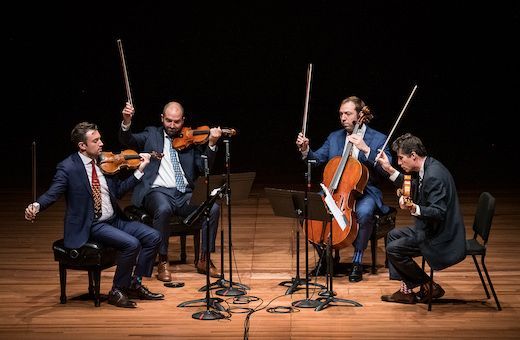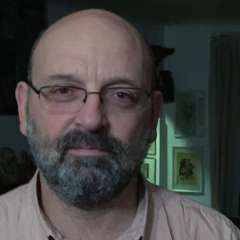Formed almost two decades ago, the Escher Quartet has been associated for a long time with the Chamber Music Society at Lincoln Center. For their latest appearance, the foursome came up with a wonderful programme consisting of rarely performed works by three great Eastern European composers.
Commissioned a quartet “in the Slavonic style”, Antonín Dvořák certainly obliged in his String Quartet no. 10 in E flat major, Op.51, the earliest of his mature works in the genre. The second movement twice interrupts a typical dumka lament – initiated by a ballad-like dialogue between the first violin (Adam Barnett-Hart) and the composer’s beloved viola (Pierre Lapointe) over the cello’s pizzicato chords – with the swift triple meter rhythms of a furiant. The Finale is anchored by a skačna, a vivacious Bohemian fiddle tune. All were played with gusto. The fusion between classical style and folk ethos was also clearly underlined: the lyrical sonata structure of the first movement, the almost Schubertian flavour of the alternations between major and minor modes, the way memories from the Allegro’s thematic material are brought forward in the next two parts.
Hard to believe, the performance of Tchaikovsky’s String Quartet no. 3 in E flat minor was, according to the hosts, the first ever under CMS’ aegis. One should be grateful to the Eschers for providing a truly distinguished rendition of this work, part of the composer’s small chamber music output. Dedicated to the memory of violinist Ferdinand Laub, a friend and colleague of the composer, it is music of great beauty, giving expression to Tchaikovsky’s dark melancholy, nonetheless avoiding those overburdening declamatory statements that appear in his symphonic oeuvre. The four interpreters shaped the central Andante funebre with utmost delicacy, including the second violin’s evocations of funeral rites, but also reminiscences of the melodic universe of Swan Lake (composed during the same period) played by the first violin. The first movement with its prominent Andante sostenuto introduction had great nobility while the uplifting final rondo, with its themes conjuring Russian folksongs, provided a welcome contrast to the sombre preceding slow section.

Composed approximately half a century after the two other works, Bartók’s String Quartet no. 3 belongs to a different world. The Hungarian was certainly not less concerned with the issue of integrating folk-music themes into classical structures than both Dvořák and Tchaikovsky were. Nevertheless, folkloric quotes are transfigured into its complex post-Bergian patterns, full of daring harmonies (some obtained with unconventional playing techniques) whose eerie beauty one can start discerning only after repeated attempts. A tightly-knit score is also marked by intricate contrapuntal exercises that the ensemble strived to highlight. They did the same rendering the less subtle attempts present in Dvořák’s last movement and in an encore: a full of delicate shadows version of the Scherzo from Mendelssohn’s Op.44 no.3.
One was reminded that the graphic art of MC Escher, the quartet’s namesake, is associated with the art of counterpoint and with complex mathematical constructs (as detailed in Douglas Hofstadter’s glorious book Gödel, Escher, Bach: an Eternal Golden Braid). The ensemble, with its emphasis on the smoothest possible transitions, suggested Escher’s work as well. An almost continuous interpenetration of instrumental voices, without any of them artificially standing out, evoked the Dutch artist’s puzzles with their unendingly interlocking silhouettes or architectural passages. As in front of an Escher drawing where details gradually become irrelevant, one was facing a single organism elegantly moving around helped by its eight coordinated arms.


